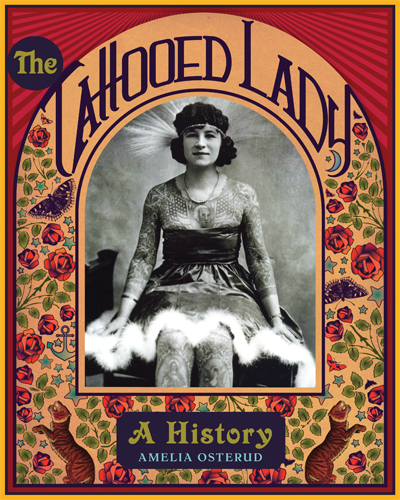Artoria Gibbons: The Tattooed Lady From Portage

One of the wild stories told to audiences before they would look upon Artoria Gibbons, tattooed lady, was one of scandal and intrigue. The tale woven by the barker said that the woman they would be seeing had married a terribly jealous older husband, who tattooed every inch of her so that no one else would find his young bride his attractive. Yet nothing could have been farther from the truth, as Artoria had willingly chosen the profession as a way of earning a better living for her and her husband.
Artoria was born Anna Mae Burlingston, of Portage County Wisconsin in 1893. When she was fourteen, her family moved to the state of Wisconsin, where tragedy struck quickly when her father died of Typhoid. She soon moved to Spokane to make her own living, so as not to be a burden to the rest of her family. It was in Spokane that she’d meet her husband, Charles Gibbons, at a department store café (Anna was so poor at the time she couldn’t even afford to eat there, she was merely enjoying a cold beverage). They would get married in 1912, and eventually move to California. Unlike the story of the jealous husband who tattooed his bride forcibly, Charles did nothing of the sort, though he was indeed a tattoo artist. It would be Anna that would choose the life of the tattooed lady, in order to bring in a greater income for the couple. For the life of the tattooed performer was far better paying than any other job available to most women at that time.
Anna took the stage name of Artoria Gibbons, and would soon cover herself in all manner of tattoos inspired by classic art. The Last Supper graced her upper back, and partial reproductions of Botticelli’s Annunciation and Michelangelo’s Holy Family would join it. An image of the Madonna was on one thigh, with the Child upon the other. Front and center upon her chest stood George Washington, flanked by American flags, above a schooner in full sail upon her stomach.
The job of a tattooed lady was one of mixed regard – it was all too easy for her to be judged as scandalous for her job required her to appear with much of her skin exposed. It would be a lie to call her imprudent, however, as in her personal life Anna was modest and even considered demure. Yet this was the life she chose, and she would continue that life for years. She’d temporarily retire from the business in the 40s to take care of her ailing husband, who had gone blind after some failed surgeries. She’d return to the work of the tattooed lady in the 70s, until she was forced to retire in 1981 at the age of 89. She’d worked for the Ringling Bros, the Hagenbeck-Wallace Sideshow, amongst numerous sideshows and dime museums.
This is just a quick glimpse into the story of Artoria. You can also read an excellent article from Wisconsin History Magazine, or even read about her (amongst many others of her chosen trade) in The Tattooed Lady: A History by Amelia Klem Osterud. Another one of the unique and magnificent women of Wisconsin throughout history.
